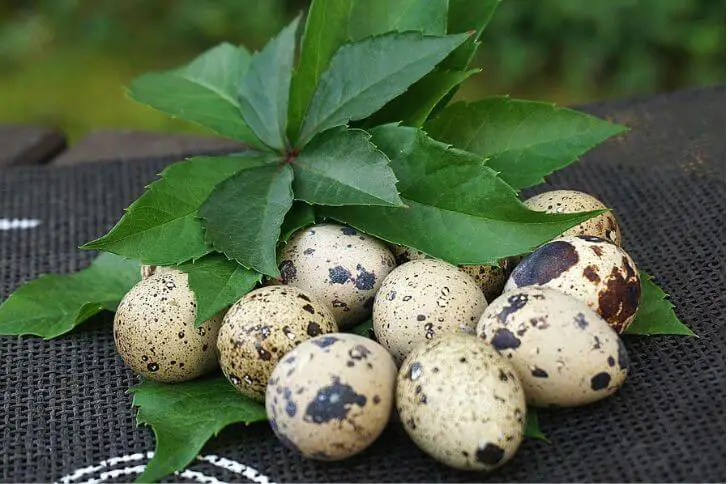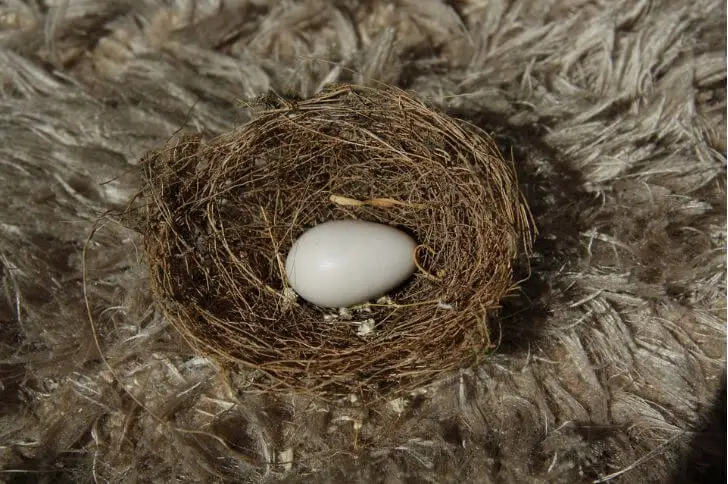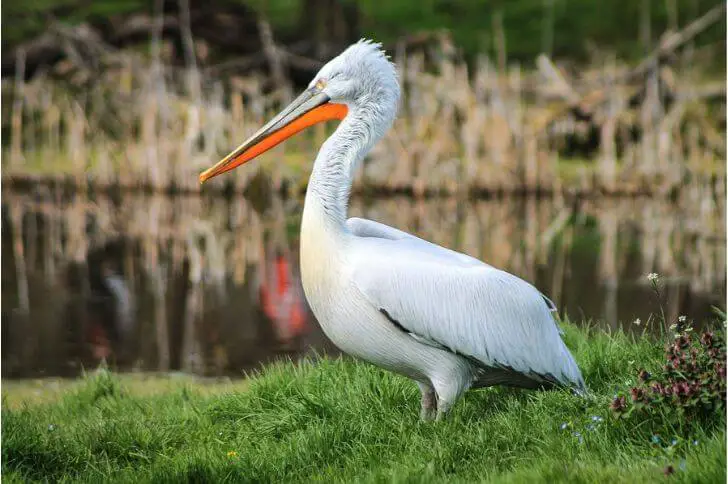A flock of bitterns is a sight to behold. These large, water-loving birds are a part of one of the most ancient bird families and they can be found living in wetlands throughout much of the Northern Hemisphere. The name for a group of these birds may surprise you — rather than being called a ‘flock’, they are actually referred to as ‘a siege’.
Identifying adults
With its unique plumage and low-pitched call, it is a captivating bird to observe in the wild. During adulthood, the American Bittern displays distinct colors and markings in its feathers that make it easy to identify in its wetland habitat.
In adult plumage, the American Bittern has a buff-brown body and a white neck with light brown streaks. A distinctive black patch adorns their throat with an accompanying yellow eye stripe above it. Overall, their bodies are longer compared to their cousins, the yellow-crowned night-herons.
The underwings are dark and you can only notice this when in flight. In addition to these features, they also have long legs that help them blend into their marshy surroundings as well as sharp bills for catching prey.
Nest Placement
Where exactly do these American Bitterns nest? Their preferred nesting sites are tall marsh vegetation such as cattails and reeds near shallow water bodies. Some may also use man-made structures such as haystacks or mounds of dirt for their nests.
The female will construct the nest out of anything from dead vegetation to sticks and line it with grasses. The nest is typically built over the water so that it is easy to access food sources like fish, water beetles, dragonflies and crabs.
Nesting Season
What time of the year do American Bitterns have babies? In general, American Bitterns will nest from mid-April to August with some regional variability in the exact timing.
Depending on the temperature of the climate they inhabit, these birds may start nesting earlier or later than normal. The female bittern will typically lay 2-7 beige brown eggs. Like other herons, the incubation period of the American bittern lasts for 24-28 day.
Babies are born helpless and with yellowish-green down.
What does a juvenile American Bittern look like
The immature American bittern has a buff brown body with white stripes on their throat and chest. Their legs are yellowish-green and short. Note, their bills are long and pointed while their necks are thick. Its wings are short and pointed and have an almost non-existent tail.
Also notice the black patch on the side of the necks. Juveniles have a small patch while adults have more prominent patches. Their calls are low “kok” notes.
What do juvenile American Bittern eat
Juveniles have unique dietary needs that can be difficult to meet if they aren’t in the right habitat. Fortunately, there are many food items that can find to help them survive and grow.
Juvenile American Bitterns typically feed on what their parents regurgitate. The partially digested food may include pickerel, eels, frogs, crab, garter snakes, water beetles and dragonflies.
American Bittern Molting
The process of molting is essential for the survival of any bird species and it is no different with American Bitterns. Their babies shed-off the yellow-green down, replacing it with buff brown feathers.
These feathers will last for a while before the bird grows stronger feathers that’ll help keep it warm in colder months and also help in flight.
How long does it take an American Bittern juvenile to fly?
Juvenile American Bitterns typically spend only a few weeks in the nest before they’re ready to leave and start to explore the world around them. This process usually begins at about two weeks old, when their feathers start to develop enough for flight. Immature bitterns will leave the nest and explore the surroundings.
At around four weeks old the chicks will start testing out their wings and try short flights near the nest before finally taking off on their own at seven or eight weeks of age.
Do American Bitterns return to the same nest every year?
According to research, American bitterns often return to their previous nesting areas each year. This indicates that there is an element of site fidelity among these creatures when it comes to choosing a home for breeding season.
Do American Bitterns mate for life?
Like other species in the Ardeidae, bitterns do not mate for life. American bitterns are polygamous. Each breeding season, a male selects its territory that it defends aggressively. It will then attract and breed with several females and repeat the mating ritual every year with different females.
What eats bitterns?
As with any species, there are predators that feed on the American Bittern. Some natural enemies include great horned owls and peregrine falcons which hunt during the day or night, respectively. Also raccoons will also target bittern eggs.
How many babies do American Bitterns have?
These avian species typically lay 2-7 beige brown eggs, sometimes 3-5, each breeding. After about 24 days of incubation, the chicks will hatch with yellowish-green down. So each breeding season, bitterns raise between two to seven chicks.
Lifespan
The average lifespan of an American Bittern is around 8 years. The oldest known American Bittern was reported to be 8 years and 4 months old. The longevity of these birds is thought to vary based on the quality of their habitat and food supply as well as whether they are able to successfully breed.
What to feed an Immature Bittern?
When feeding your juvenile American Bittern, you should provide them with meals that are high in protein and low in fat. A diet of crickets, mealworms, shrimp or small fish will provide them with the necessary nutrients they need to grow and thrive.It’s best to stick to two or three meals per day depending on the size of your bird.
Do bitterns call at night?
Yes! Bitterns, especially males, are known for their booming calls which can be heard through the night. The male bittern has a deep and loud call that echoes across wetlands and marshes. When you hear it in the darkness, it can be quite startling but also mesmerizing at the same time.
Are bitterns endangered?
No. According to the IUCN, the American bittern population is stable. According to recent research there are over 3 million individuals in the wild.
What is a flock of bitterns called?
The name for a group of these birds is siege.
Final Thoughts
In conclusion,if you are looking to know more about the early stages of life of the American bittern, this article is for you. From the plumage to their size to how long they take before leaving the nest, this article will help you answer all these questions and most importantly what to do if you come across this marsh bird.
Source:
https://en.wikipedia.org/wiki/American_bittern
Hi, my name is Steve. My friend and I started the spanishbirdguides.com to share our passion with other like-minded people. So, if bird watching is your thing, you’ll love this blog. I’ll share what I’ve learnt about both local birds and those found in other parts of the world. Also, I’d love to hear your experiences.



